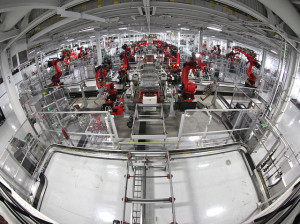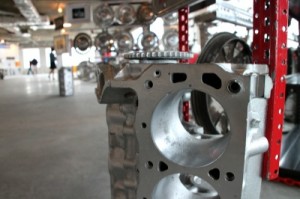 In the “new normal” of manufacturing, a system for tracking accurate quality metrics and key performance indicators (KPIs) is essential. In several industry sectors, such as pharmaceutical and automotive, the tracking of every single data point along the manufacturing line is critical.
In the “new normal” of manufacturing, a system for tracking accurate quality metrics and key performance indicators (KPIs) is essential. In several industry sectors, such as pharmaceutical and automotive, the tracking of every single data point along the manufacturing line is critical.
In the early years, some manufacturers created home-grown versions of MI-type data collection systems. But, the speed of change in manufacturing spurred by market demand and competitiveness, soon outgrew the capabilities and robust reporting requirements of the custom systems.
What really happened?
There were major problems with custom MI systems:
- The first systems to market were proprietary. This made them difficult to use. There wasn’t enough knowledge or training available to make the systems sufficiently integrated into the overall manufacturing environment. As a result, many MI integrations weren’t very integrated at all.
- The systems did do a good job of collecting data at certain points in the process, but manufacturers didn’t realize the training and investment required to effectively leverage the data that was gathered. Reporting was cumbersome and often required more programming to create a new report or change existing reports.
- When data collection hampered production performance, operations tended to bypass the MI system and capture metrics manually.
- Accurate quality control metrics were often sacrificed for higher production output.
The end result was somewhat predictable. Manufacturers felt like they had been oversold and under-delivered on the use and results. Even though systems were touted as giving manufacturers more flexibility, the data collected didn’t provide any real-time action.
To realize the value of an MI after data is collected, it has to be displayed, turned into knowledge and then acted upon in order to contribute to a flexible manufacturing environment. When acted upon, the data a MI system collects helps drive business decisions that lead to a more flexible and productive facility.
What’s Changed?
Now, industry standard MI systems have had a resurgence and are developed to integrate with Enterprise Resource Planning (ERP) systems. Here’s what has happened:
- Most of the major automation solution vendors have created standardized systems.
- Standardization has created a marketplace for integrators who can deploy and support these systems.
- Common architectures allow for future upgradeability and expandability.
- Standard operating procedures have been developed to integrate the data from the reports and real-time KPIs that an MI generates back into production.
Most proprietary systems are now being replaced with off-the-shelf industry standard software which allows full integration and robust reporting. Now,manufacturers have well supported options backed by the biggest players in the industry. Integrators and manufacturers can train their engineers for certification to ensure their investment is properly deployed and integrated into the overall manufacturing process.
As MI data helps to drive better business decisions, manufacturers will further invest in system upgrades and expansions, but MI is still not for everyone. Many manufacturers find themselves asking whether an MI system would make sense for their operation.
3 Manufacturing Scenarios that Require a Manufacturing Execution System
 There is a mantra among engineers that many people are familiar with, “You can get something fast, good or cheap. Pick two.” The thought process is actually a formal concept known as the project management triangle which describes competing project qualities of scope (quality), time and cost. An MI system makes it possible to improve product quality on a line without sacrificing efficiency (speed). Even though quality doesn’t have to come at the expense of time with a MI system, the integration process is still an investment, so there is a cost. There are 3 increasingly common situations where manufacturers are finding an MI system is a worthwhile investment.
There is a mantra among engineers that many people are familiar with, “You can get something fast, good or cheap. Pick two.” The thought process is actually a formal concept known as the project management triangle which describes competing project qualities of scope (quality), time and cost. An MI system makes it possible to improve product quality on a line without sacrificing efficiency (speed). Even though quality doesn’t have to come at the expense of time with a MI system, the integration process is still an investment, so there is a cost. There are 3 increasingly common situations where manufacturers are finding an MI system is a worthwhile investment.
Manufacturing Intelligence system can be leveraged when:
1.) Customers require quality reports. Traditionally, FDA regulated industries like pharmaceuticals, food and cosmetic goods required quality reports by law, but the marketplace is also driving trends in quality reporting. Manufacturers who create finished products, are requiring suppliers to provide quality reports especially in industries with potentially large liabilities such as the automotive industry.
2.) You need real-time KPI and OEE data. Those who adopt MI before their competition will have an advantage in the marketplace. MI systems enable real-time KPI and OEE data that give manufacturers new abilities like knowing exactly which products to produce on a specific line to maximize efficiency.
3.) You need real-time quality reports. Some manufacturers still warehouse products while waiting on lab testing and paper reports. With as MES you get test data before products leave the line. Quality is monitored during production so that if quality degrades, real-time adjustments can be made.
Widespread Acceptance
Manufacturing Intelligence is now a key component that manufacturers won’t leave out of operational performance planning. The improvements in operational efficiency that result from an MI are already beginning to fuel more widespread adoption. As manufacturers increase operational efficiency by using real-time quality, KPI and OEE data, their small MI projects quickly take on a life of their own.
Operational Efficiency and Quality Reporting
 We recently assisted an auto component manufacturer who was experiencing a common manufacturing problem. Over the years, they had developed a quality reporting system in-house. The reporting was detailed enough to meet their objectives, but maintaining and upgrading the patchworked MI system became costly and difficult. Upgrading to a standardized quality control and data tracking would give them the ability to meet their current objectives while offering a path for upgrades and enhancements well into the future. Upon completing their integration, they realized that they had received more than they bargained for.
We recently assisted an auto component manufacturer who was experiencing a common manufacturing problem. Over the years, they had developed a quality reporting system in-house. The reporting was detailed enough to meet their objectives, but maintaining and upgrading the patchworked MI system became costly and difficult. Upgrading to a standardized quality control and data tracking would give them the ability to meet their current objectives while offering a path for upgrades and enhancements well into the future. Upon completing their integration, they realized that they had received more than they bargained for.
The Problem
The auto component manufacturer’s need for flexible quality reports is driven by their clients, automotive manufacturers. The automotive manufacturers needed to know if their specifications were met with each delivery, and each client needs reports with different information matching their specific parts. To make sure the reports were accurate, they also wanted to see how the quality reports were being generated and recorded.
The component manufacturer had a good (but proprietary) process in place to ensure quality was maintained. In each work cell, at each station where the components were assembled there were pass/fail tests and certain thresholds to meet. But the records were isolated to each work cell and quality control had no central reporting to monitor the production. Also the OEE data at each work cell was gathered by hand and compiled and published long after it was useful. They needed to centralize and automate their quality reporting to meet the automotive manufacturer’s needs and their OEE reporting to be able to make real time production decisions.
The Solution
An industry standardized data collection and quality control management system was implemented. Data collection is now centrally automated and information is visible in real-time on dashboards and reports. The reports are robust, flexible and easy for operations to create or change as needed. The system is expandable and maintainable allowing the manufacturer to meet future needs. Quality standards are consistent and overall production has improved.
Unintended Consequences
The solution we implemented for the automotive component manufacturer proved to be more successful than they had anticipated. Originally, they only had one specific production area in mind, but they quickly wanted to expand the system into other areas once they saw the results. Expanding the quality control data management solution across an entire facility or multiple facilities standardizes the architecture and increases operational efficiency even further. Quality monitoring and product adjustment is done in real-time, reducing product throwaway and ensuring customer satisfaction.
The new solution has had a fast impact on current operations and we are currently in the process of expanding the auto component manufacturer’s data collection for quality control across their facility. The solution will eventually be replicated in other plants. If you would like to see what an updated data management solution can do for you, give us a call today.
 Manufacturing Intelligence (MI) projects improve manufacturing operations by turning data into actionable information that drives business results. An MI can provide unparalleled insight into manufacturing systems anddrive improvements in:
Manufacturing Intelligence (MI) projects improve manufacturing operations by turning data into actionable information that drives business results. An MI can provide unparalleled insight into manufacturing systems anddrive improvements in:
- line performance
- line availability
- overall quality
- waste reduction
- inventory management
changeovers - reduced impact of recalls, etc.
These projects have to deliver the promised business improvements if they’re going to have long-term support within an organization. Yet, many MI projects fall short of meeting expectations. There are too many examples of MI projects that provide manufacturers with reams of unusable data and little else.
Data Challenges
Technological advances in automation, instrumentation and networking over the past several decades has resulted in a tremendous amount of diagnostic data being available for consumption. A typical manufacturing system can easily contain millions of data points. Sorting through this data to determine how to best use it creates unique challenges, including:
- Data Overload. With the massive amount of data available, having the time to sort through it to find what you need, when you need it, becomes a frustrating exercise that often results in abandoning the search and making a decision based on the limited information available.
- Untimely Data. Looking at yesterday’s data is not always conducive to improving today’s operations. Historical data is useful for certain analysis and comparison of metrics, but real-time data that manufacturers can act upon when variances occur is more important.
- Lack of User-Based Data. A manufacturing enterprise contains various users who want to extract value from this data, including production, engineering, plant management, quality control, purchasing, corporate management, etc. And, each user requires a unique view of the data. For example, a plant manager might want to know the average cost per case being produced in near real time, while a maintenance manager might only want to look at one of the variables making up the cost per case Key Performance Indicator (KPI), such as machine downtime. Lack of Context-Based Data. For the above cost-per-case example, it would be beneficial to see this KPI trended along with other variables that might affect it, but that aren’t part of the KPI calculation. These can include product being run, shift, amount of overtime required and total energy usage in the plant.
- Inaccurate Data. An additional challenge is reporting inaccurate data that typically leads to lack of user confidence in the data. If the data can’t be trusted, then there’s no point in spending the time to look at it. Bad data is worse than no data. Several potential causes for this exist, including manual data collection, poor configuration, mislabeling of data points and not understanding what makes up each data point.
The reality of these challenges prompts the question: What can manufacturers do to extract maximum value out of manufacturing data?
Plan to Address These Challenges
A well-thought-out plan should focus on how to convert the data into useful information. But, who determines what information is useful? This in turn leads us to ask each manufacturer what information they require to enable better decision-making. This approach focuses the effort on the users’ needs, not the endless data points available.
A typical plan should consist of the following steps:
- Identify users and requirements for each user role. Representatives from each user group (i.e. operators, maintenance, quality, safety, plant management, corporate, IT, etc.) should be interviewed to determine what data can enable them to make better decisions in their day-to-day functions.
- Identify how each user will use the requested data to improve operations. During the discovery period to determine user requirements, the focus is on how each information requirement will translate to improving the business. This ensures that everyone keeps the goal in mind at all times. Once manufacturers understand and document each user requirement and improvement opportunity, they have a framework for what success means for their projects.
- Identify KPIs required and standardize for apples-to-apples comparisons. KPIs provide a common benchmark for the plant’s metrics and allow meaningful comparison of data. For example, having a different cost-per-case metric for each manufacturing system or plant causes confusion and doesn’t allow effective comparison. Getting everyone to speak a common language allows for better understanding and provides the framework for improvement. KPIs also provide a leaner, more targeted view of the data. Drilling into each KPI then can provide detail that supports that particular KPI calculation, with additional drill-down providing even more detail. This hierarchical organization of data allows easy access to the level of detail required, without losing sight of the bigger picture.
- Identify data sources (PLCs, HMIs, Historians, ERP, CRM, WMS, LIM, etc.) to access. Context-based information might require data to be pulled from various sources to provide comparative analysis. For instance, energy usage data is meaningful when compared to production information such as production counts and products run. In addition, a cost-per-case metric, for example, might require data labor costs from the ERP system, production counts from the historian, parts costs from asset management and energy costs from an external source.
- Identify data presentation interfaces, such as dashboards, Web Pages, HMIs and smartphones, that best suit each user. Technology now allows the same information to be presented easily in a variety of interfaces, including Web pages, smartphones and large LCD displays. Manufacturers should evaluate selected technologies for each data requirement and user group based on how each consumes information and reacts to it.
- An IT manager might need text and e-mail alerts sent to their smartphone whenever a manufacturing server develops a critical error.
- Production personnel might prefer an overhead, large LCD display that provides a manufacturing system overview with color-coded downtime blocks to indicate equipment status.
- A corporate manager could use a smartphone that displays the day’s planned versus actual production counts for each plant. Color-coded indicators show status with drill-down capability to access more granular information that shows each production line’s performance.
- Select software solutions to collect, integrate and present the information. MI software such as FactoryTalk® VantagePoint from Rockwell Automation provides functionality that allows manufacturers to bring live data from multiple disparate sources to integrate and present data in meaningful ways. The software provides a common interface to view and analyze the data without having to access different software interfaces separately for KPIs, such as cost per case that requires data from multiple systems. In addition, FactoryTalk VantagePoint integration into Microsoft SharePoint allows for even greater access to business intelligence data and leverages SharePoint’s core capabilities of collaboration, information sharing, content management, search, blogs, wikis and security.
- Identify gaps in infrastructure and technology for achieving project goals. Once the future state is identified, the present state should be evaluated to determine what infrastructure and technology gaps need to be addressed to access the desired data and present it as planned.
- Identify and execute pilots to test any areas of concern and provide users with a test drive. Prior to rolling out a full-scale deployment, test any areas of concern that could affect functionality delivered by the MI project. A pilot test typically is a small-scale implementation for this purpose. In addition, a pilot provides manufacturers with a system test drive so they can obtain better feedback before rolling out the complete system. This phased approach allows early adopters to understand the value that the system can deliver. Therefore, requirements that can provide the highest value typically are targeted for a pilot.
- Roll out across all manufacturing sites. Once pilots are complete and lessons learned are incorporated, a rollout strategy can be developed to deliver project requirements to all identified users. A continuous improvement plan should be part of the rollout to ensure the system continues to be optimized based on user feedback and as needs change. Ideally, the manufacturer assigns a champion to lead this effort.
Manufacturing Intelligence is a critical tool for driving operational improvements, but committing to a disciplined plan for executing these projects is crucial for success. If you would like to learn more download our free whitepaper, Using Data-Driven Decisions to Improve Operations.



